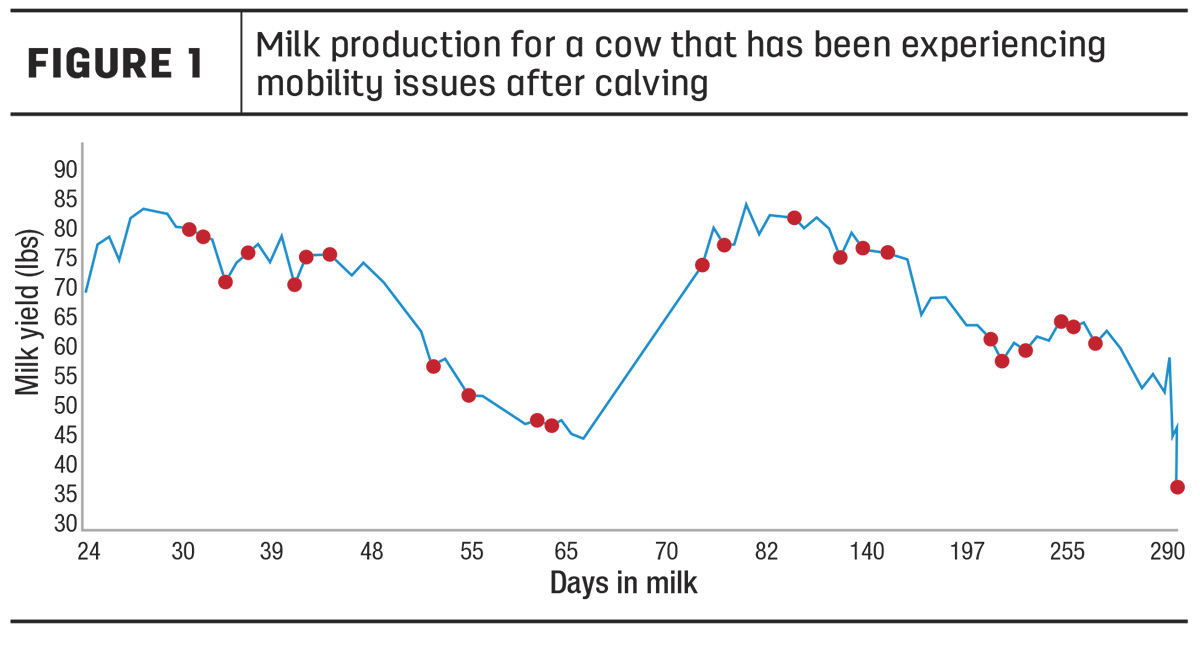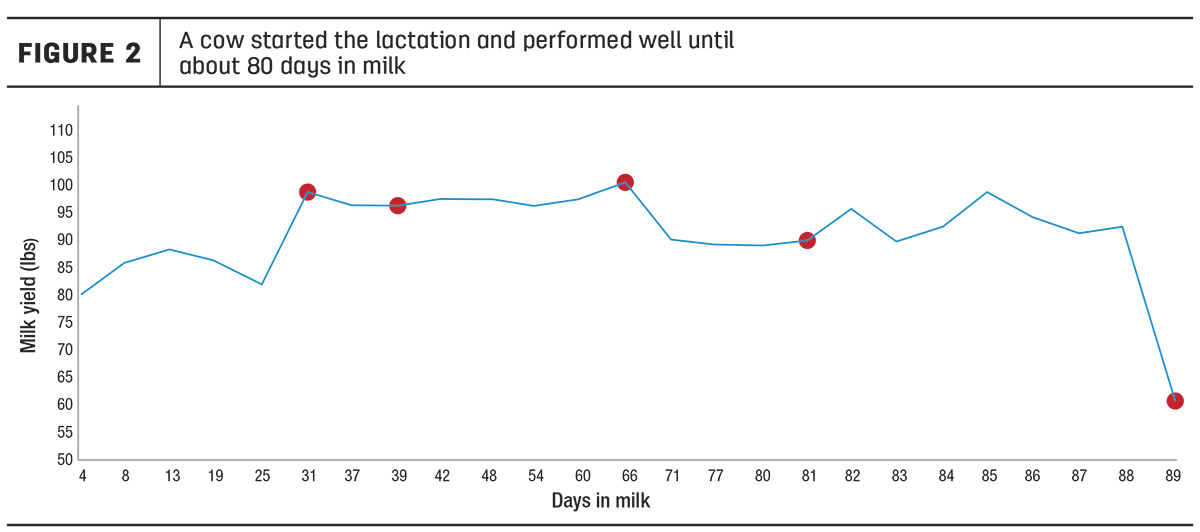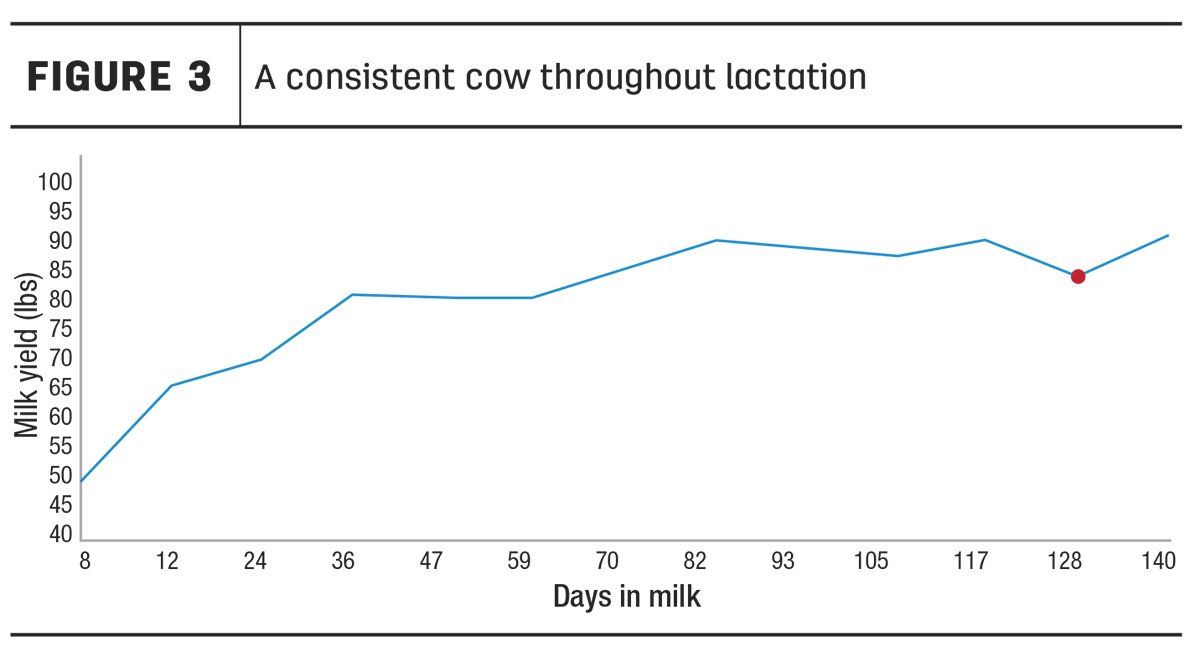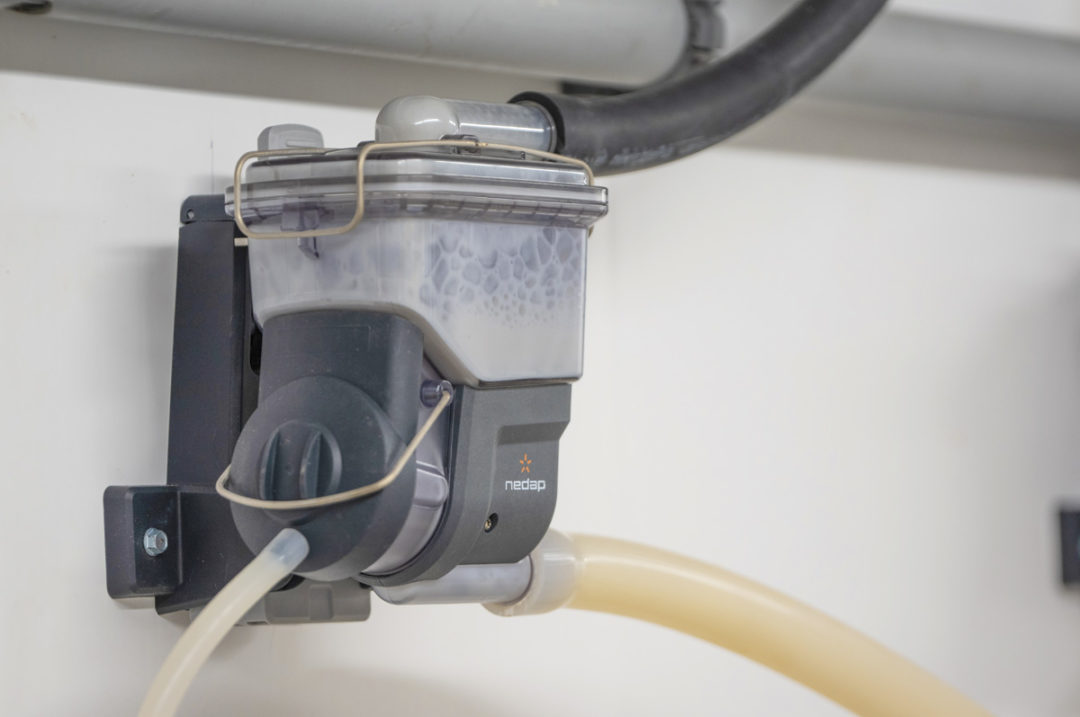How do you ensure your barns are filled with profitable cows and that the overall trajectory for your herd is headed in the right direction?
By using accurate, actionable parlor performance data, of course.
Technological advances in data collection and monitoring mean you can more closely understand the pulse of your herd like never before. In turn, you gain timely, accurate, actionable insights into individual cow and herd health and performance for improved management decisions.
Milk performance data can help you upgrade your herd and prioritize profitability. That is because it helps you to know which cows are reaching their potential, identify health events, and track nutrition challenges and feed changes more quickly by tracking overall production trends for individual cows, groups and the entire herd.
These details can help trim housing, feed and veterinary expenses. Dairies can also rely on the data to know which animals best contribute to the farm’s bottom line.
Why invest in milk meters?
To put it simply, farms generate revenue from milk production. Therefore, you must know the volume of milk sold on a per-cow basis to better understand your farm’s profits and losses.
Individual animal data can help determine if your breakeven, or your margin, is being sustained by every animal in the herd instead of by groups. Cows can hide in a large group when they are not productive because the rest of the group increases average milk yield.
For this reason, it is not beneficial to average cows’ performance on a bell curve. Instead, ensure all cows are profitable so your farm's margins are not being affected by individual animals that are bringing down the herd.
Milk yield data is also a key indicator of animal health. These data points give a good snapshot of how your cows are feeling or when to consult with your veterinarian and nutritionist to solve challenges.
In addition, examining milk yield data means you can become more selective about genomics and breeding – by breeding the right cows for the longevity and the future of your herd.
Most dairies want more control over each animal to know what is going on with her and to have increased confidence in breeding, or non-breeding, decisions. Milk meters deliver on those objectives.
Tracking three cows
Let’s put data into action. Here are three examples of how actionable parlor performance data can help identify cow challenges and aid in improved decision-making.
Scenario one
Figure 1 illustrates milk production for a cow that has been experiencing mobility issues after calving. The blue trend line indicates milk production while the red dots show alerts based on rumination and inactivity. It is easy to see milk production tapers off after the transition period and starts climbing again after treatment. As time goes on, milk production slacks off again.

The data offer a good example of a chronic cow that responds to treatment, but the overall trend indicates a lag in performance throughout her lactation. We can also easily see that activity monitoring data overlayed with the milk production provides a clear picture of the challenges this cow is experiencing. This cow is not a high performer, but she could easily hide in a large group of herdmates that bring the average up.
If this cow is in your barn, use this information to determine whether the cow is destined for a career change.
Scenario two
The cow represented by Figure 2 started the lactation and performed well until about 80 days in milk. We know that when looking at cow data, we always want to see consistency and smooth changes. Data for this cow bouncing up and down for a week indicates she was harboring a problem, and by day 88, she took a dive.

This is a good example of using accurate milk yield data and individual performance metrics for early interventions. If this cow had been on a watch list, action could likely have been taken to avert the crash.
Examining reports for several cows from this time frame can help indicate whether the issue was limited to a single cow or was part of a larger challenge.
Scenario three
Finally, Figure 3 shows a consistent cow. For this snapshot of her lactation, she shows a curved climb in production. The slight blips recover almost immediately and could be attributed to natural environmental factors.

Again, comparing an individual performance record to the larger group or herd can more easily identify the scope of milk yield fluctuations. Context is key for making decisions affecting individual animals versus herd-wide management changes.
Put information to work
Ultimately, how you use data depends on your farm objectives. Performance data are most effective when you segregate your herd and put the information to work to improve management decisions.
At a minimum, you should be able to view the entire herd, break it down into subgroups and then to the individual animal level – at your discretion. For instance, you could view animals in different lactation periods, different feed ration groups or whatever makes the most sense to your farm. All data are in the system, but what is important to each farm will sort itself to the forefront.
Keep in mind, it is more important to identify underperforming cows than over-performing cows. Cows increasing in yield are those you want to leave alone to just be a cow. It is important to note those that are overachieving significantly, but alerts should focus on underachieving cows to encourage timely, effective interventions.
Users can create alerts for factors such as overall milk yield, percent milk yield deviations, cows that need a leg tag removed, or movement from the hospital pen or fresh cow pen into the main herd.
What you track depends on group size and composition.
- When looking at a trend line for a group of pregnant, mid-lactation cows, track at least 10% to 15% of a group across a 10-day average.
- If you see things affecting more than 10% of the cows, or 10% of the cows are responding negatively to something, that is a huge indicator of something you need to explore more deeply.
- For fresh cows, you may be looking for a 5% deviation or 20% to 30% of the cows presenting issues. Transition cow management sets the pace for overall herd health and getting cows started on the proper path will ensure a productive lactation.
At the end of the day, the parlor is the heartbeat of the farm. Insights gleaned from milk yield data can bring the whole farm together to ensure productivity and profitability are working at healthy levels. Data do not replace your management protocols – the information enhances your team’s efficiency and your herd’s productivity.









